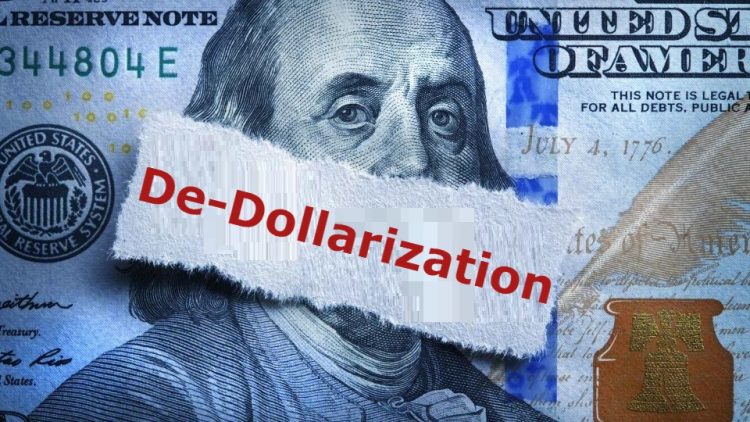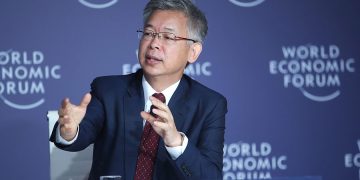In recent years, the international financial landscape has witnessed an accelerating trend often referred to as “de-dollarization”—the deliberate reduction in reliance on the U.S. dollar (USD) for global trade, finance, reserves, and investments. This movement, driven by geopolitical tensions, shifts in economic power, and concerns over dollar dominance and sanctions risk, is beginning to reshape how countries, corporations, and investors approach cross-border asset allocation.
As the dollar’s traditional supremacy faces challenges, the question arises: How will global asset allocation strategies evolve in response to de-dollarization? What are the implications for currencies, asset classes, and portfolio construction? This article provides a comprehensive analysis of the de-dollarization wave and explores its likely impact on the global investment landscape.
1. Understanding the De-dollarization Trend
1.1 What Is De-dollarization?
De-dollarization refers to the process by which countries, financial institutions, and investors reduce their dependence on the USD in international transactions, reserves, and investments. This may involve:
- Using alternative currencies for trade settlements.
- Diversifying foreign exchange reserves away from the dollar.
- Increasing issuance of debt and assets denominated in other currencies.
- Developing cross-border payment systems independent of dollar-based infrastructure.
1.2 Drivers of De-dollarization
Several key factors have fueled this trend:
- Geopolitical tensions: U.S. sanctions on countries like Russia, Iran, and others have highlighted the risks of dollar reliance.
- Rise of other economic powers: China’s growing economic clout has boosted the international use of the renminbi (RMB).
- Technological advancements: Blockchain and digital currencies offer new alternatives to traditional dollar-based systems.
- Desire for monetary sovereignty: Countries seek to protect themselves from external financial shocks and policy decisions by the U.S. Federal Reserve.
2. Current State of Global Currency Usage
Despite de-dollarization efforts, the USD remains dominant:
- Roughly 60% of global foreign exchange reserves are held in USD.
- The dollar accounts for approximately 40–50% of global payments.
- Over 60% of international debt issuance is denominated in USD.
However, there is a gradual but visible diversification, with the euro, yen, renminbi, and others gaining incremental shares.
3. Implications for Global Asset Allocation
3.1 Currency Diversification in Portfolios
Investors will likely increase allocations to assets denominated in non-dollar currencies to hedge currency risk and capitalize on emerging market opportunities. Key impacts include:
- Greater exposure to the Chinese yuan: With China’s increasing role in global trade and capital markets, yuan-denominated bonds and equities may become more prominent.
- European currencies and emerging markets: The euro, Swiss franc, and currencies of resource-rich countries may see increased interest.
- Currency risk management: Enhanced focus on dynamic currency hedging strategies to mitigate volatility.
3.2 Shifts in Sovereign and Corporate Debt Markets
- Non-USD debt issuance rises: Sovereigns and corporations may issue more bonds in local or alternative currencies to reduce dollar exposure and attract diverse investor bases.
- Impact on yields and spreads: Changing demand dynamics could influence yields, credit spreads, and liquidity in different currency bond markets.
3.3 Equity Market Rebalancing
- Companies with revenues and costs denominated in non-USD currencies may attract new investor flows.
- Emerging markets with strong fundamentals and growing financial markets could become more important in global equity portfolios.
3.4 Commodities and Trade-Linked Assets
- Commodities historically priced in USD, such as oil and gold, may see gradual pricing in other currencies, influencing related investment products.
- Trade finance and supply chain financing could shift towards alternative currencies, impacting asset-backed securities and financing vehicles.

4. Challenges and Risks
4.1 Market Fragmentation and Liquidity Concerns
A multi-currency system could increase market complexity and reduce the deep liquidity traditionally provided by USD markets, potentially increasing volatility.
4.2 Regulatory and Political Risks
Fragmentation may lead to divergent regulatory regimes and complicate cross-border investment flows. Political tensions could introduce new risks and uncertainties.
4.3 Transition Costs and Infrastructure Needs
Shifting away from USD dominance requires new payment systems, legal frameworks, and market infrastructures, which entail costs and time.
5. Strategic Recommendations for Investors
5.1 Embrace Currency and Regional Diversification
Investors should broaden their currency exposure and consider allocations to assets in emerging markets and alternative currency zones.
5.2 Increase Flexibility and Use of Hedging Tools
Dynamic hedging strategies will be crucial to navigate currency fluctuations and geopolitical uncertainties.
5.3 Monitor Policy Developments and Geopolitical Risks Closely
Active management and scenario analysis are essential to adapt to rapid changes in global economic alignments.
5.4 Consider Alternative Assets and Digital Currencies
Exposure to digital assets, including central bank digital currencies (CBDCs), may offer new opportunities amid evolving monetary systems.
6. Conclusion
The de-dollarization wave represents a significant shift in the global financial order. While the USD’s dominance will not disappear overnight, the increasing use of alternative currencies and new financial infrastructures will reshape global asset allocation strategies.
Investors who proactively adapt to this changing environment—diversifying currency exposure, managing risks, and embracing innovation—will be better positioned to navigate the evolving landscape and capture emerging opportunities.
As de-dollarization progresses, it promises to bring both challenges and new avenues for portfolio optimization, ultimately contributing to a more multipolar and resilient global financial system.



































